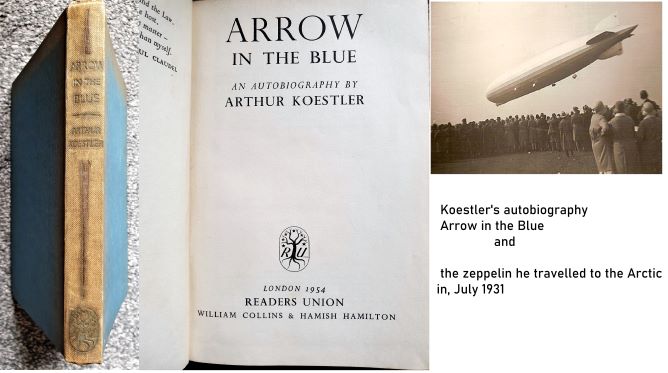Scotland is gradually being emptied of its population, its spirit, its wealth, industry, art, intellect and innate character. If a country exports its most enterprising spirits and best minds year after year, for 50 or 100 or 200 years, some result will inevitably follow.
Edwin Muir, Scottish Journey, 1935:

(Library & Archives, Canada)
It is reprehensible that any government would regard its people as its main export but this was the fate of Scotland following the establishment of the Union – during the later 18 th century, 19th century and even into the 20th century.
Without the broad shoulders of the Union, Scots are frequently told, Scotland would be a failing state – which begs the question, if Scotland has done so well from the Union how is it her population was compelled to abandon her in such huge numbers soon after the Union of 1707?
Either the Union has been devilishly good for Scotland and transformed her from a backward and struggling country into one both so innovative and confidently successful that she would have no trouble forging a bright future alone or it hasn’t. Which is it? We should be told.
Size seems to confound Unionists. Scotland’s population of about 5.5 million is too small, they argue. Successful nations with similar sized populations – Ireland, New Zealand, Kuwait, Denmark, Finland, Slovakia, Norway, Oman, Croatia might disagree and by now I’m getting into the 4 millions – Latvia, Bahrain, Estonia, Cyprus, Mauritius – below 2 million and could carry on to tiny Malta, Iceland, Barbados, Bermuda, Gibraltar – all of 33,000 inhabitants. But where was I? Scotland, unlike some of the above is richly endowed with potential for market-valuable renewables, is still an oil and gas producer, has unique and sought-after food and drink commodities, has an educated and skilled workforce and strong engineering pedigree. If Scotland with all of this is not capable of standing on her own feet then the Union has failed Scotland and failed Scotland spectacularly, reducing our country to a pathetic dogsbody of a nation perpetually insulted and patronised and one whose interests are simply ignored by Westminster where the Union’s power is anchored.
Bring on some goalposts. Not there. Over there. Where size is clearly not the issue it must be the economy that stops independence. Scotland isn’t rich enough. Remember the guffawing back in 2014-15 when oil prices collapsed? You’d be broke, Unionists crowed while simultaneously denying Scotland’s seabed was, in fact, Scottish. They aren’t laughing now with Brent crude prices back up in the 90s. Goalpost change. Climate change – you can’t open any more oil and gas fields – although this is a reserved matter and Unionist HQ, Westminster, is doing just that. Scotland’s large and expanding renewable energy sector is dismissed by Unionists who insist England will refuse to buy Scottish power and fresh water. Doesn’t sound like the actions of a friend never mind Union partner. But the Union has never been a partnership based on respect or trust.

From the inception of the Union government in Westminster operated on the principle that England’s industries and trade took precedence over Scotland’s. And in case we didn’t get the message Scots were told their country was poor and barbaric and we should sling our hooks and leave Scotland, the worthless nation, to rot. And many did. Some were forcibly displaced. Some chose to leave. The British Empire had spaces that needed filling with Europeans – so to Canada, Australia, New Zealand, South Africa – ousting their native populations. Like so many of today’s migrants, Scots moved abroad in the hope of making a a better future for themselves and their families than was possible at home – because the Union dividend has always been a myth. Or they had no choice but to leave. Because the Union has been a disaster for Scotland.
One hundred years ago, in 1912, in the month of April 9,000 people left Scotland – just under 3,000 in a single week. In another week, in May of 1912, 3,520 Scots migrated to Canada or America from the Clyde alone. Other ports were available. On 1st June, again from the Clyde, a further 2,000 were shipped west. On 6th June 1912, a report claimed emigration from Scotland was running twice as fast as from England.
Canada was the favoured destination for Scots. Before the Union, Scotland established a colony in Canada in 1621. It was called Nova Scotia (New Scotland.) This colonisation proved brief, being surrendered to the French in 1632. Two centuries later, under the Union, the Canadian authorities employed squads of agents to sell Canada to Scots – to entice the brightest and best to settle there where farm land could be bought for the price of a year’s rent in Scotland and where industries required skilled men and women. Leaflets were pressed into hands and colourful posters pinned up in public places promising everything that was great and everything that was different from failed Scotland bogged down by hardship, low pay, high rents, filthy slums and poor food – the Union dividend.
Lord Strathcona, a Scot who became a Canadian High Commissioner to the United Kingdom and a big shot in Canada, enthused about the vast territory of Canada able to maintain 150,000,000 people – he wasn’t talking about Canada’s own indigenous peoples, you understand, he wanted Scots to up sticks and settle there where everything was “the best.”
“Anyone – even a lady – could succeed on the land there” Strathcona said by way of encouragement. He knew ‘ladies’ from Russia who were farming.
Back in Scotland the Union had so run down the country Scots took little persuading to leave. In 1912 a flood of humanity boarded vessels, mainly for Canada and America, but also for South Africa, Australia and New Zealand. This flood was a continuation of the one the year before. In 1911, about 90,000 Scots packed up and left the old country. Across the rest of Europe emigration to America and Canada was slowing down but not from Scotland where it was accelerating because Scots could see no future in Scotland in the Union. In 1906 Scottish exceeded Irish emigration for the first time and did so again in 1911-12.
In 1911 Scotland recorded its lowest death rate since 1855 (when records began) and lowest birth rate since 1873 except for 1890. The low birth rate might be explained by the drainage of young men, sometimes abandoning wives, and young women moving abroad. Scotland’s population depletion was only regarded with concern once rate payers discovered they were being asked to provide poor relief for deserted families. But emigration provided excellent business opportunities for shipping lines.

Between 1830 and 1914 around 2 million Scots emigrated abroad and a similar number are believed to have moved to other parts of the UK. Throughout the 20th century Scotland’s population decline continued. Since 1851 the proportion of Scotland’s population to the population of the UK as a whole has diminished by 25%.
People, industries and company headquarters have moved away from Scotland. The oil and gas sector off the northeast of Scotland ran counter to this long-term trend and had a major impact on population, jobs and wage levels. Unfortunately, the immense wealth produced off Scotland’s coast failed to benefit Scotland. Instead, Thatcher ensured that London and the southeast of England profited with vast building and infrastructure spending there. Compare Europe’s oil and gas capital, Aberdeen, with London. You would never know Aberdeen was the hub of so much multinational activity. Scotland was prevented from benefitting from this klondike which is an odd sort of dividend – aka no dividend at all but cynical exploitation by a greedy partner.

James Annand, an Aberdeenshire journalist and soon-to-be Liberal MP (the shortest serving MP, dying within a couple of weeks of winning and never taking his seat) was campaigning in 1903. He buttered up his audience in St Fergus with references to townies who had no idea how tough life and work were for country folk and complained about the lack of affordable farms for rent. He reminded his audience that Scotland was a poor country – a poor country? Surely some mistake – after two hundred years of that Union dividend how come Scotland was still poor? The Unionist never explained but he did emphasise just how poor Scotland was and how it was understandable that so very many Scots migrated because they could not make a decent living at home. Annand supported Scots getting out of Scotland to Canada – the land of opportunity.
Canada still tempting Scots away in its quest for “suitable men and women to go there.’ Annand mentioned Texas with its “three million acres of land, owned by a single company, that was being offered in lots for sale at £1000 each” and Australia with its “incalculable opportunities for enterprise in connection with unoccupied territory” – where indigenous people didn’t appear to matter.
And so Scotland continued to be drained of many of its most “suitable men and women” – from countryside and cities – the populations of Edinburgh and Glasgow were also in decline. The tide of migration that swept “the best young men and women of Scotland” ashore in North America was detrimental to the economy back home as well as reinforcing how Scotland was failing its own people following years of underinvestment, attacks on its manufacturing, lack of opportunities, lack of hope and ambition over generations. The coming of the Great War placed a temporary halt on Scotland’s population depletion by emigration, replacing it with another loss, of many of its fine young people, in that disastrous bloodbath.
Early in the twentieth century when England’s population was about five times greater than Scotland’s its wealth was about thirty-six times greater than Scotland’s. That Union dividend, again.
Two hundred years of the Union, of the Union dividend, and the message was – emigrate if you know what’s good for you.

For centuries England repeatedly attacked Scotland, in an attempt to annex it. It did not succeed until 1707 when a handful of Scottish nobles sold out their country for personal gain. That was the point that Scotland became an irrelevance in the eyes of the British monarchy and government except for the money it could raise from Scots taxpayers to help pay for England’s near continuing wars and her young men to sacrifice themselves as cannon fodder – for wars have a habit of eliminating people at a fearful rate. Peacetime taxes levied by Westminster favoured English industries to the detriment of Scottish ones. The Union was an English protectionist measure set up by the monarchy and Westminster. The myth it has been good for Scotland is just that. Westminster operates to benefit the city of London and this is why present talk of ‘levelling up’ is just talk. Ireland was treated in a similar manner to Scotland. The Irish woollen trade was destroyed to protect England’s and during the terrible famine years of the 1840s while 400,000 Irish people were starving to death the grain they grew on their land was carted away to fill British bellies. Destitute Irish could see no future at home and so left. Likewise in Scotland. Between 1840 and 1940 a little short of a million Scots went to live in other parts of the UK while more than two million emigrated abroad.
The Highlands and Islands Emigration Society encouraged Scots escape starvation during the Highland Potato Famine of 1846 by emigrating to Australia. In Westminster the Emigration Act of 1851 provided subsidies to landlords to ship people abroad like so much livestock. Queen Victoria and assorted aristocrats contributed to the costs to rid Scotland of Scots, though she, herself, decided to use the country as a holiday retreat.
At the Union Scotland’s population was about 20% of the UK’s population. Today Scotland’s 5.5 million make up 8.2% of the UK’s overall population. According to the James Hutton Institute Scotland’s rural populations could decline by 33% in little more than 20 years.
While I was able to find sources that looked at the impact of emigration on Ireland I found none on the impact of emigration from Scotland on Scotland. Although not identical emigration from Ireland has comparisons with Scotland but in Ireland’s case destitution drove emigration much more than occurred in Scotland. The perception that migrants are always poor and low skilled has never been true. Of course people emigrate for different reasons and some impoverished and low skilled will take their chances moving abroad, often under duress, but these groups are those least likely to migrate while the educated, skilled and ambitious are more likely to voluntarily emigrate.
Migrants have also moved to Scotland. Through the 19th and 20th centuries they came mainly from Ireland, the Baltic countries and northern Europe (a reversal of 16th and 17th century Scots moving abroad to trade), Italians and, of course, people from Wales and England. With increasing global migration, the number of Scots born outwith Scotland continues to increase; in 2018-19 just under 40,000 moved to Scotland from overseas – 20,000 greater than left.

The return of some autonomy to Scotland through the partial resurrection of a parliament in Edinburgh provided hope for the future of the country. However, Westminster jealously guards its overall control of the whole UK and will chip away at Edinburgh’s authority and will as far as possible implement policies that protect and support that southeast corner of England, as it has done since 1707. These are dangerous times for Scots. If Westminster succeeds in extinguishing Scotland’s recently found confidence and optimism the country will again be plunged into a state of hopelessness that led to people leaving over three hundred years. The Union that needed heavily armed fortifications to ensure compliance in its early days, that ran down Scotland and drained it of “its best men and women” might have proved a dividend for Westminster but at a terrible cost for Scotland.















































